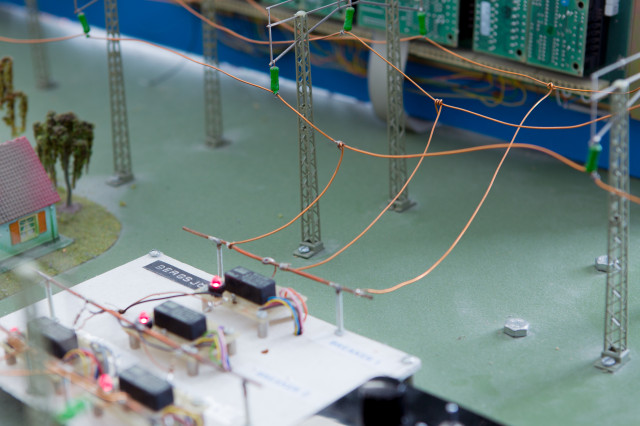- Performance of digitally modulated signals on fading multi-path channels.
- Synchronization in wireless communication.
- Orthogonal Frequency Division Multiplexing (OFDM). Principle and applications.
- Trellis Coded Modulation (TCM).
- Space-time trellis coded modulation.
- Advanced antenna systems for future wireless communication.
- Error control coding with feedback: ARQ and link adaptation in wireless communication.
- Spread spectrum transmission and wireless access methods (CDMA, FH, OFDMA).
- Interference modeling in wireless communication, joint detection and interference cancellation.
- Ultra-Wide-Band (UWB) impulse radio and its promise.
IK2508 Wireless Transmission Techniques 7.5 credits

This course on Wireless Transmissions delves into the principles and applications of the most cutting-edge methods, enabling you to design and analyze high-performance wireless systems. As wireless communication revolutionises modern technology, mastering advanced techniques is essential for engineers and professionals.
Information per course offering
Choose semester and course offering to see current information and more about the course, such as course syllabus, study period, and application information.
Information for Spring 2026 TCOMM programme students
- Course location
KTH Campus
- Duration
- 16 Mar 2026 - 1 Jun 2026
- Periods
- P4 (7.5 hp)
- Pace of study
50%
- Application code
60409
- Form of study
Normal Daytime
- Language of instruction
English
- Course memo
- Course memo is not published
- Number of places
Min: 25
- Target group
Open to all programmes as long as it can be included in your programme.
- Planned modular schedule
- [object Object]
- Schedule
- Schedule is not published
Contact
Course syllabus as PDF
Please note: all information from the Course syllabus is available on this page in an accessible format.
Course syllabus IK2508 (Spring 2026–)Content and learning outcomes
Course contents
Intended learning outcomes
After passing the course, the student should be able to
- evaluate wireless link performance (bit error rate) in a structured way and evaluate tradeoffs
- perform system simulations (modulation/demodulation, channel coding/decoding, BER, and channel models)
- explain and evaluate methods for mitigating wireless channel impairments
- describe different types of equalization methods and how they solve the problem of intersymbol-interference in wireless communication
- describe the difference between forward error control coding and error control coding with feedback, and how they are used in wireless communications of today
- design trellis coded modulation for additive white Gaussian noise channels and fading channels and identify the difference in design for the two channels
- explain the benefits of advanced antenna systems in wireless communication and how can they be used
- describe various advanced techniques (CDMA, multi-user detection, OFDM etc.) and their benefits in wireless communication systems
- describe the principle of ultra-wide-band and its difference to regular radio communication.
Literature and preparations
Specific prerequisites
Knowledge in wireless communication systems, 3 credits, corresponding to completed course IK2507 Wireless communication systems or completed part LAB1 in IK2507.
Knowledge in calculus in one variable, 7,5 credits, corresponding to completed course SF1624/SF1672/SF1685.
Knowledge in linear algebra, 7,5 credits, corresponding to completed course SF1624/SF1672/SF1684.
Knowledge in probability theory and statistics, 6 credits, corresponding to completed course SF1910-SF1924/SF1935.
Knowledge in English corresponding to completed upper secondary course English B/6.
Recommended prerequisites
IK2507 Wireless Communication Systems
Literature
Examination and completion
If the course is discontinued, students may request to be examined during the following two academic years.
Grading scale
Examination
- TEN1 - Examination, 7.5 credits, grading scale: A, B, C, D, E, FX, F
Based on recommendation from KTH’s coordinator for disabilities, the examiner will decide how to adapt an examination for students with documented disability.
The examiner may apply another examination format when re-examining individual students.
The exam is written.
Examiner
Ethical approach
- All members of a group are responsible for the group's work.
- In any assessment, every student shall honestly disclose any help received and sources used.
- In an oral assessment, every student shall be able to present and answer questions about the entire assignment and solution.
Further information
Course room in Canvas
Offered by
Main field of study
Education cycle
Supplementary information
In this course, the EECS code of honor applies, see: http://www.kth.se/en/eecs/utbildning/hederskodex.